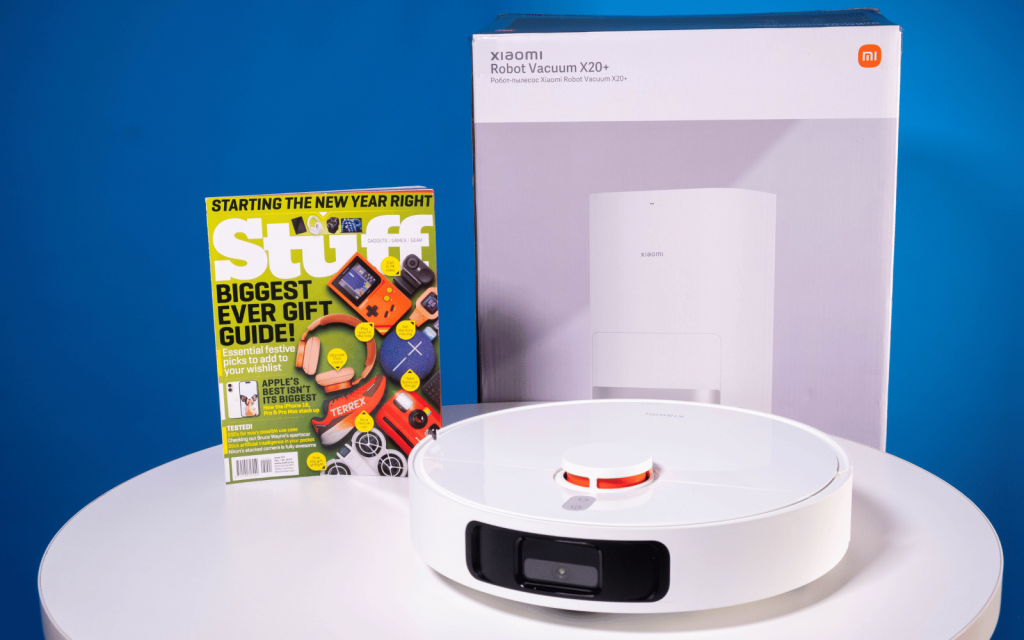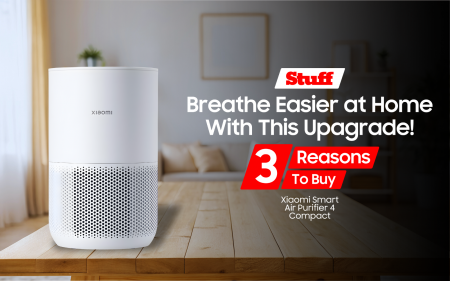The Xiaomi X20+ robot vacuum with its self-emptying and cleaning station impressed us by mostly staying out of the way and getting on with its job. Dual 4l water tanks, a dust bag in the station that's supposed to last 75 days before needing to be replaced, and a rather large internal battery means once setup you can mostly leave it to clean for a good few weeks before it will require your attention. It isn't a cheap purchase at R12,000 but considering the time it can save you, its probably worth it for most large households.
-
Design
-
Performance
-
Features
-
Value
We’re sure there are folks out there… somewhere… who relish the thought of cleaning their homes. Likewise, we know that most people don’t. The Xiaomi X20+ robot vacuum is for both types of people.
If you’re the second kind, like us, having this thing zooming around your house will considerably cut down the time you spend on cleaning. If you’re in the first group, then owning the Xiaomi X20+ means you might not get to clean quite as often but can still pay special attention to those areas in need of a deep clean.
Farewell, dirt
Making the dirt disappear doesn’t take long after bringing the Xiaomi X20+ home. Assembly and setup takes roughly ten to fifteen minutes, depending on how many times you get distracted marvelling at the fact you now own a robot. The robot vacuum comes mostly preassembled. All we had to do was attach a small brush and the two mop pads. The self-emptying and cleaning station is also mostly already intact – just clip the ramp in place, plug it in, and you’re good to go.
Once that’s done, turn your attention to the Xiaomi Home app (Android/iOS) that you’ve already downloaded (right?) and follow the initial setup prompts. This will include letting the vacuum roam around every room it will be cleaning to create a map of its new home. Before this happens it’s wise to pick up anything you don’t want it to suck up, like pieces of Lego, or anything that could make its job difficult, like shoes. It can avoid shoes well enough, even in the dark, thanks to its LiDAR navigation (Xiaomi calls this LDS) and S-Cross obstacle avoidance system, but it won’t be able to clean under them.
While it’s busy mapping the area and scouting for obstacles, it’s a good idea to open up the cleaning station to make sure the bag is in place (ours was already installed) and fill up the four-litre clean water tank. That bag is supposed to last up to 75 days before it will need replacing. It’s not reusable and a pack of five replacements can be had for R380.
Once the vac has returned to its station, and you’re happy with the map it created, you can send it out to cleanse the area. If you aren’t happy with the map it created you can make it do it again, this time closing doors to rooms you’d rather not have it enter. The app also allows you to mark carpeted areas (the light blue area in the map above) so the vac knows not to mop there. This might not be necessary for you to do manually as the vac can detect carpets and will raise the twin mop pads by 7mm when it encounters a carpet.
You shouldn’t have to worry about flights of stairs. We didn’t have any to thoroughly test it with and while the system can save up to three maps (one for each floor, potentially), the bot hasn’t figured out how to climb them yet so you’ll likely need to carry it up or down as needed. We did manage to witness it saving itself from tumbling down an almost-stair. The 4cm drop proved too high for the Xiaomi X20+ to manage – it could flop down okay but getting back up was an issue. Similarly, the vac’s 97mm stature could also mean it might struggle to get under low furniture.
Returning to base
As far as we’re concerned, a self-emptying and cleaning base station is essential for a robot vacuum system. What’s the point of having a thing clean for you automatically if you still have to empty its small internal bin every 15 minutes? That’s especially true if you live with hairy pets or long-haired housemates. Speaking of hair, we noticed that after the first few cleaning runs the central 17cm rubber brush roller had gathered quite a bit of hair which we had to cut off ourselves – something to keep in mind.
We’ll admit we were a little sceptical of its mopping capabilities but the dual mop pads, which lower to the surface and spin at 180rpm, proved efficient at eliminating muddy paw prints and most scuff marks on our tiled flooring. Since no detergent or soapy products are used in the process, particularly sticky messes, like when you discover a dropped sweet and sour dumpling the following day, may require more than one pass.
When the bot arrives back at its station, those mop pads are soaked and scrubbed by the removable tray and then air-dried for between two and twelve hours. This means you shouldn’t have to deal with a damp-smelling vac or cleaning station. They can also be removed from their plastic frame and washed properly if need be. When the station starts to look grimy it’s probably time to trigger the self-cleaning function through the app. You can also remove the tray that cleans the mop heads and wash it by hand if you prefer.
Lots to see and do
Most of the features, settings, and controls for the Xiaomi X20+ live in the Xiaomi Home app. This includes the ability to set scheduled cleaning times and a do-not-disturb period, choose between varying levels of mop wetness and suction power, and even remotely control the robot vac as they do on BattleBots. It will also play nice with a smart home setup and is compatible with Amazon Alexa and Google Assistant so you can bark voice commands when you spill a drink or track dirt in.
As for the cleaning part, the Xiaomi X20+ handled itself well. If the carpets you own are on the thicker side, there are four levels of suction power available, capped at 6,000Pa – silent, standard, strong, and turbo. Our carpets aren’t thick so we found the ‘strong’ setting to be sufficient for removing stubborn detritus. Obviously, as you increase the suction power the noise level will increase. But even on the turbo setting it isn’t louder than what you’d expect from a vacuum cleaner, perhaps a little quieter if you’re used to larger devices.
Battery life depends on your setup – the size of your home, and the settings you go for. We didn’t have a single problem from the 5,200mAh battery but then our flat is only slightly bigger than a shoe box. If you’ve got a larger area that needs cleaning the vac might need to return to its station for a top-up before it heads out again to pick up where it left off. It will do this all on its own.
Xiaomi X20+ verdict
 Robot vacuums like this aren’t going to completely remove the need for manual cleaning. But they’re great for maintaining your living space, at least the floor of it, between deeper cleans and could mean you won’t have to scrub as hard.
Robot vacuums like this aren’t going to completely remove the need for manual cleaning. But they’re great for maintaining your living space, at least the floor of it, between deeper cleans and could mean you won’t have to scrub as hard.
If you’ve got a home you need help cleaning, the Xiaomi X20+ will make short work of the task… unless there are stairs involved. That minor shortcoming aside, we found little fault with the X20+. It might prove a bit too large for smaller homes with closely spaced furniture (the station is on the larger side) or completely carpeted floors. In the latter’s case, half of the vac’s feature set is superfluous and you’re better off spending your money on a different model. But if you’ve got more than four rooms and can afford to put R12,000 towards your cleaning budget then you won’t be sorry picking one up.









